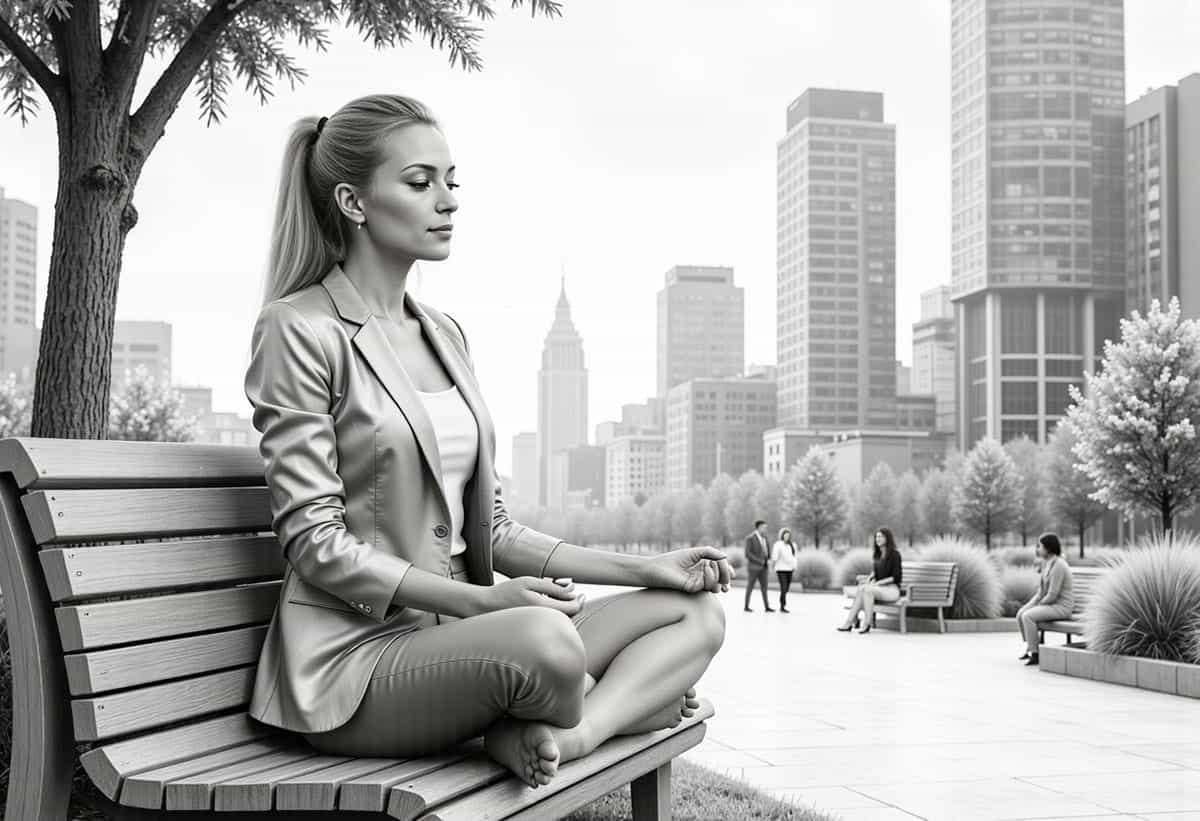Disclosure: Website may contain affiliate links which means if you decide to make a purchase through our link for products or services then we may receive a commission. We participant in the Amazon Services LLC Associates Program, an affiliate advertising program designed to provide a means for sites to earn advertising fees by advertising and linking to Amazon.com. Read More
Understanding Mindful Living
Mindfulness, a concept rooted in ancient meditation practices, signifies a state of being fully present and engaged in the moment, without distraction or judgment.
Originating from Buddhist traditions, it has gained widespread recognition in the contemporary context as a secular practice focused on mental clarity and emotional well-being.
Key principles of mindfulness include awareness, acceptance, and non-reactivity, allowing individuals to observe their thoughts and feelings without being overwhelmed by them.
The benefits of mindfulness are extensive, particularly in the realm of mental health. Studies have shown that regular mindfulness practice can lead to significant reductions in stress and anxiety levels.
A research conducted by the American Psychological Association indicated that participants who engaged in mindfulness-based stress reduction showed a marked improvement in their ability to manage stress and exhibit greater emotional resilience.
Furthermore, mindfulness practices, such as meditation and deep-breathing exercises, have been linked with improvements in attention and focus, which are often compromised in our fast-paced daily lives.
Statistics reveal that individuals who incorporate mindfulness into their routines report higher levels of overall well-being. According to a survey by the National Center for Complementary and Integrative Health, approximately 18 million American adults practiced mindfulness or meditation in 2017, a figure that has continued to rise.
This surge in interest underscores the recognition of mindfulness as a valuable tool for combating the relentless pressures of modern existence. The practice not only serves as an antidote to stress but also cultivates a deeper connection to oneself and enhances the appreciation of everyday experiences.
In essence, embracing mindfulness fosters a proactive approach to mental health, allowing individuals to navigate the complexities of life with clarity and emotional strength, in ways that are increasingly crucial in the busy world we inhabit today.
Mindful Living Practices for Everyday Life
Incorporating mindfulness into daily routines can significantly reduce stress and enhance overall well-being. One of the simplest practices is mindful breathing, which can be practiced anywhere and anytime.
To begin, find a comfortable position, either sitting or standing. Close your eyes or soften your gaze, directing your attention to your breath. Take a deep inhale through your nose, letting your abdomen rise, and exhale slowly through your mouth.
Try to sustain this focus on your breathing for around five minutes. If your thoughts drift, kindly guide your attention back to your breath. To build a routine, consider setting aside a regular time for this practice each day, such as in the morning or before going to bed.
Another effective mindfulness exercise is guided meditation. Numerous apps and online resources are available, providing both short and extended sessions tailored to various needs. To engage in this practice, find a quiet space where you won’t be disturbed. Sit comfortably, and choose a guided meditation that appeals to you.
Close your eyes and follow the instructor’s guidance, focusing on the imagery and sensations described. Setting a regular schedule for guided meditation, even if it’s just ten minutes a day, can greatly enhance your mindfulness skills.
Mindfulness can also be integrated into routine activities, such as eating or walking. When eating, take the time to notice the colors, textures, and flavors of your food.
Eat slowly and relish each bite, staying mindful of your body’s signals of hunger and fullness. Similarly, during a walk, concentrate on the sensations of your feet touching the ground, the rhythm of your breath, and the sounds around you. This practice not only enhances enjoyment but also promotes a state of awareness that can help mitigate stress.
By nourishing these habits and setting reasonable expectations, individuals can cultivate a more mindful lifestyle amidst their busy schedules.
Creating a Mindful Environment at Home and Work
Establishing a mindful living environment in both personal and professional spaces is crucial for fostering tranquility and reducing stress.
A key element in this process is decluttering, which not only clears physical space but also creates mental clarity. Begin by sorting through belongings and identifying items that are no longer needed.
Organizing these spaces can significantly reduce distractions and provide a sense of control over one’s surroundings.
In the home, dedicate areas specifically for relaxation and mindfulness. Creating a cozy reading nook or a quiet corner for meditation can invite moments of peace into daily routines.
Incorporate elements like plants, which not only improve air quality but also enhance the aesthetic and emotional quality of the environment. Calming colors such as soft blues, greens, and neutrals can be utilized in both home décor and workspace to promote a soothing atmosphere.
It may also be beneficial to minimize the presence of electronics in these areas, allowing for uninterrupted moments of respite.
In the workplace, fostering mindfulness can be approached through both individual efforts and collective initiatives. Encourage organization by establishing communal spaces that are kept tidy and promote collaboration.
Designated quiet zones within the office can serve as retreats for those seeking concentration or a moment of pause. It is also important to collaborate with colleagues to encourage mindfulness practices, such as group meditation sessions or wellness workshops, fostering a supportive atmosphere.
By intentionally designing environments—both at home and at work—that prioritize mindfulness, individuals can cultivate a shared understanding of peace and focus.
These practices not only benefit personal well-being but also create a harmonious environment conducive to productivity and cooperation among family members and coworkers alike.
Developing a Mindful Living Routine for Stress
Creating a personalized, long-term mindful living routine is essential for effective stress reduction. Mindfulness, as a practice, fosters a deeper connection between mind and body, promoting overall well-being.
To begin, individuals should assess their current lifestyle and identify areas where mindfulness can be integrated. This may involve setting aside time each day for meditation, yoga, or simply being present in everyday activities. The critical aspect here is consistency; dedicating a few moments daily can significantly impact one’s mental health over time.
Setting realistic goals is crucial in establishing a mindful routine. Begin with small, simple practices and gradually extend their duration and complexity over time.
For instance, begin with five minutes of focused breathing each morning and slowly extend this time or introduce new practices as comfort grows. Adjusting goals based on personal progress and changing circumstances ensures that mindfulness remains relevant and attainable.
Life can be unpredictable, and flexibility within one’s routine is vital for maintaining engagement and motivation.
Tracking progress is another effective strategy for sustaining a mindful routine. Journaling experiences related to mindfulness can provide insights into what works best for the individual, allowing for adjustments when necessary.
Utilizing apps or creating a simple checklist can serve as reminders and motivation to stay committed to the practice. Additionally, it’s beneficial to periodically evaluate one’s routine, considering factors such as stress levels, mental clarity, and overall satisfaction.
This process of reflection not only allows for continuous improvement but also reinforces the importance of mindfulness as a habit.
Ultimately, developing a mindful routine tailored to individual needs fosters a balanced approach to life and promotes sustained stress reduction.
By embracing consistency, setting achievable goals, and remaining adaptable, individuals can cultivate a lasting practice that significantly enhances their overall quality of life.
Well thats my take on mindful living, Hope it helps- Lyra Kade



